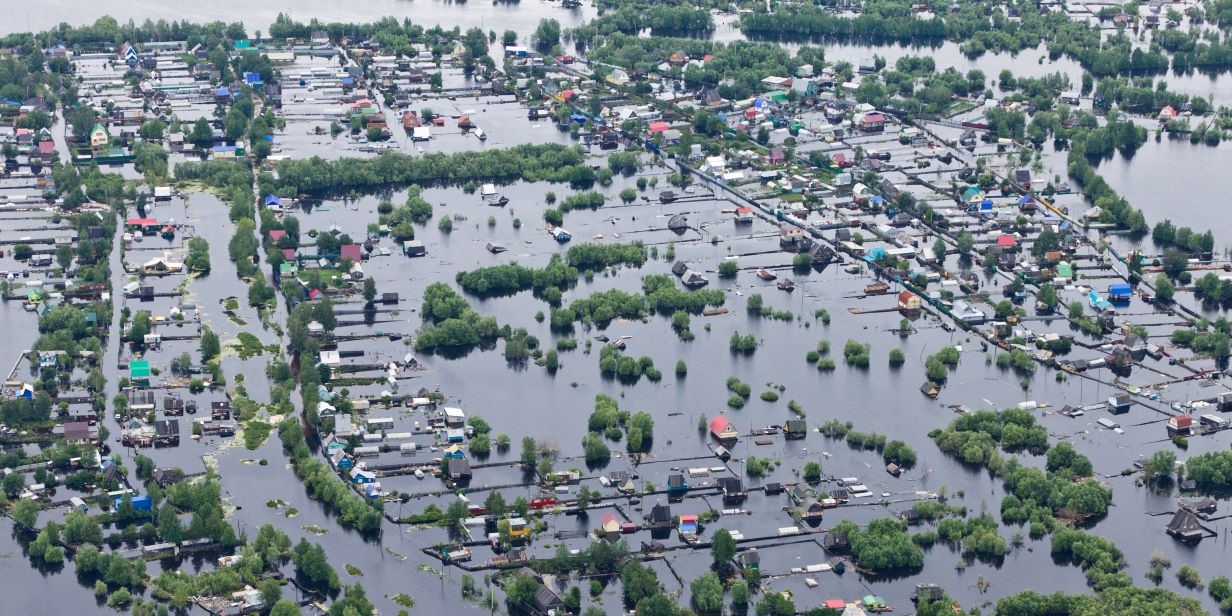3 highlights from FM's expert webinar on flooding

Flooding is a major threat to businesses, causing billions in losses every year. And the risks are growing: Major flooding catastrophes struck areas around the world in 2024, including Southeast Asia, Europe and the United States. Construction in floodplains contributes to the rising threat of flood. And climate change is also playing a role.
So what can be done about it? In April, FM hosted a webinar with expert Jessica Waters to help you see the flood risks that others don’t. Waters—VP, hazards manager for climate and structural resilience at FM—shared statistics, success stories and tips on staying resilient. A recording of the webinar, which included a live audience Q&A, can be viewed by clicking this link.
Below are three highlights from the discussion.
The potentially widespread, long-lasting damage of flooding
When a river overtops its banks, a levee breaks or a coastal storm sends waves crashing over seawalls, the initial damage is obvious: soaked equipment, structural problems, lack of site access. Floodwater can contain pollutants, debris, even raw sewage.
“Picture those inside your facility, soaking fine finishes like flooring and walls, damaging finished goods or raw materials, settling on your critical production equipment,” Waters said. “If your facility is in a coastal area, there's the added concern of saltwater corrosion. It’s important to understand that waves of just three feet in height can cause structural damage.”
But flooding has a significant impact—to operations, to supply chains, to business reputations—even after the waters subside. A few years ago, FM commissioned an analysis that examined 71 of the world’s largest publicly traded companies, all of which reported financial damage from a major flood event in recent years. The study found that 12 months after those flood losses, their shareholder value had declined by an average of 5%.
That’s why it’s so important to address the risk. The first step is truly understanding it.
A universal challenge, with solutions that are unique to each business
As the name indicates, high-risk flood zones bring a higher risk of flooding. But flooding is not limited to those areas, Waters explained. In the United States, more than 40% of National Flood Insurance Program claims come from outside high-risk areas.
Although flood risk is widespread, it’s also a site-specific hazard, Waters explained. That’s why FM partners with clients to understand key vulnerabilities and find ways to address them.
“This will often involve site-level modeling, leveraging technology to help us visualize how water will flow around—and sometimes into—a facility in different flood scenarios,” Waters explained. “Once it’s understood where the water is going, these experts are able to identify solutions to keep the water out.”
The importance of planning ahead of time
Against the backdrop of rising risks and far-reaching consequences, there is some good news about flooding: You have plenty of options to respond. There are three key strategies, Waters explained: stay above flood level, keep the water out, and where neither is possible, wet floodproof—let water in, but design the building and its contents to be resilient.
“No single strategy will work everywhere, and oftentimes, facilities will need to employ a combination of these strategies,” Waters said.
One specific measure that businesses can take is developing a strong Flood Emergency Response Plan, or FERP. FM’s loss history statistics show that facilities with a strong FERP experience 70% less damage than those with an inadequate FERP or no FERP at all.
The key is implementing protective measures now.
“If your preparation begins when you see flooding in the forecast,” Waters said, “it’s too late to be fully prepared.”
More resources:
